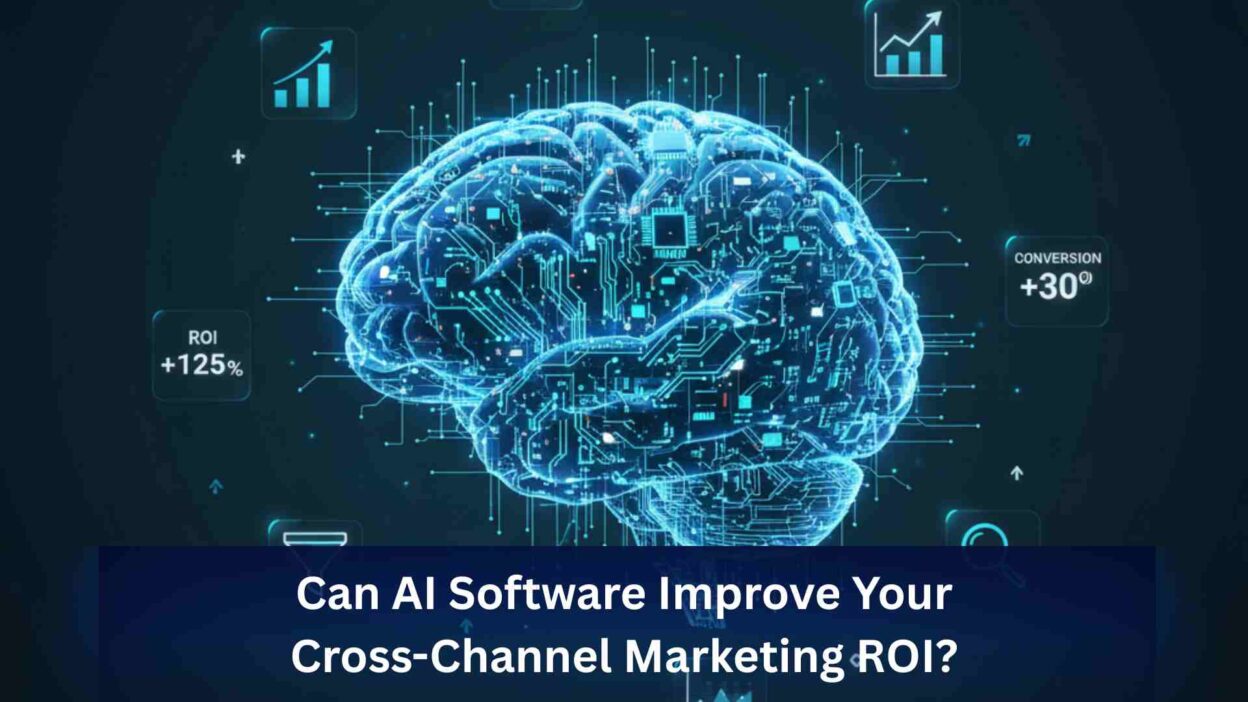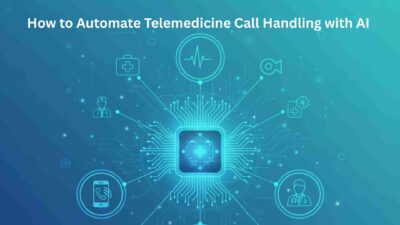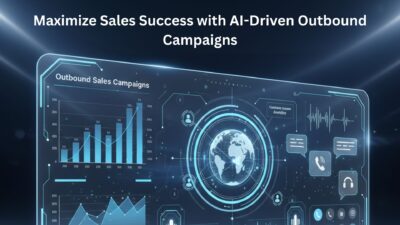Introduction to AI-Powered Marketing Transformation
TL;DR Marketing teams face unprecedented complexity in managing campaigns across multiple platforms simultaneously. Email, social media, paid advertising, and content marketing require coordinated strategies. AI software for cross-channel marketing automation eliminates manual coordination challenges while improving results.
Table of Contents
Traditional marketing approaches struggle to deliver personalized experiences at scale. Customers expect relevant messages across every touchpoint they encounter. Artificial intelligence analyzes vast data to create cohesive experiences that convert.
Return on investment remains the ultimate measure of marketing effectiveness. Companies investing in AI tools report significant improvements in campaign performance. This guide explores how intelligent automation transforms marketing ROI fundamentally.
Understanding Cross-Channel Marketing Complexity
The Multi-Platform Challenge
Modern consumers interact with brands across dozens of different channels daily. They research products on mobile, browse social media, check email, and visit websites. Each platform operates with unique characteristics, audiences, and best practices.
Marketers must maintain consistent messaging while adapting content for each channel. What works on Instagram fails on LinkedIn due to audience expectations. Manual coordination across platforms creates inconsistencies, damaging brand perception.
Timing coordination becomes impossible without automation when managing multiple channels. A promotion on one platform should align with related content elsewhere. Disconnected campaigns waste budget and confuse potential customers significantly.
Data Silos and Attribution Problems
Different marketing tools collect data in isolated systems, preventing holistic analysis. Email platforms, advertising networks, and analytics tools rarely communicate effectively. Fragmented data makes understanding customer journeys nearly impossible.
Attribution challenges prevent accurate ROI calculation for multi-touch campaigns. Which interaction deserves credit when customers engage across multiple channels? AI software for cross-channel marketing automation solves attribution through advanced modeling.
Manual data consolidation consumes valuable time without guaranteeing accuracy. Spreadsheets and reports become outdated immediately after creation. Real-time insights remain inaccessible with traditional data management approaches.
Resource Constraints and Scaling Issues
Small marketing teams cannot possibly optimize campaigns across every channel manually. Time spent on one platform means neglecting others with equal potential. Resource limitations force difficult prioritization decisions that sacrifice opportunities.
Scaling successful campaigns requires proportional increases in team size traditionally. Growth becomes expensive as headcount expands to match increasing complexity. This economic model limits marketing investment returns over time.
Repetitive tasks like list segmentation and performance monitoring consume creative energy. Marketers should focus on strategy rather than mechanical execution. Automation frees human talent for activities generating maximum value.
How AI Software Transforms Marketing Operations
Intelligent Data Integration
AI platforms automatically collect and consolidate data from all marketing channels. Unified customer profiles emerge from fragmented information across systems. Single views of customer behavior enable coordinated strategy development.
Machine learning identifies patterns invisible to human analysis across massive datasets. Customer preferences, behavior trends, and conversion signals become clear. These insights inform targeting, messaging, and timing decisions automatically.
Real-time data processing enables immediate response to changing conditions. Campaign adjustments happen within minutes based on performance indicators. AI software for cross-channel marketing automation eliminates lag between insight and action.
Predictive Analytics Capabilities
Historical data trains models predicting future customer behavior accurately. Likelihood to purchase, churn risk, and engagement probability all become forecastable. Predictions guide resource allocation toward the highest-probability opportunities.
Customer lifetime value calculations inform acquisition spending and retention strategies. Accurate predictions prevent overspending on low-value prospects. Budget efficiency improves dramatically through data-driven prioritization.
Trend forecasting anticipates market shifts before they fully emerge. Early detection of changing preferences enables proactive strategy adjustments. Competitive advantages accrue to organizations acting on predictive insights first.
Automated Personalization at Scale
Dynamic content generation creates unique messages for each customer automatically. Personalization extends beyond simple name insertion to comprehensive customization. Product recommendations, messaging tone, and visual elements all adapt individually.
Behavioral triggers activate relevant communications at optimal moments. Abandoned cart reminders, re-engagement campaigns, and upsell offers deploy automatically. Timely relevance dramatically increases conversion rates compared to batch campaigns.
Testing and optimization happen continuously without manual experiment management. AI systems try variations automatically and learn from results. AI software for cross-channel marketing automation evolves strategies through continuous improvement.
Channel Orchestration
Coordinated campaigns maintain message consistency while respecting channel differences. Core themes adapt appropriately for email, social, display, and other platforms. Unified strategy with platform-specific execution delivers optimal results.
Frequency management prevents message fatigue from over-exposure across channels. Customers receive appropriate contact volume without annoying repetition. Smart throttling maintains engagement without triggering unsubscribes.
Sequential messaging guides customers through journeys spanning multiple touchpoints. Each interaction builds on previous engagements toward conversion goals. Orchestrated sequences convert significantly better than disconnected one-off messages.
Measuring ROI Improvements with AI
Enhanced Attribution Modeling
Multi-touch attribution assigns credit appropriately across customer journey touchpoints. AI models consider interaction sequence, timing, and channel characteristics. Accurate attribution reveals which investments truly drive results.
First-touch, last-touch, and linear models oversimplify complex realities. Machine learning-based attribution captures nuanced influence patterns. Better understanding enables better budget allocation decisions.
AI software for cross-channel marketing automation quantifies indirect contributions of awareness campaigns. Brand-building activities show measurable impact on conversion campaigns. Complete ROI pictures justify investments beyond direct response tactics.
Cost Efficiency Gains
Automation reduces labor costs by handling repetitive tasks without human intervention. Teams accomplish more with existing headcount through productivity multiplication. Salary expenses decrease as a percentage of the total marketing budget.
Improved targeting reduces wasted spending on unlikely prospects. Higher conversion rates mean fewer impressions required per customer acquired. Cost per acquisition drops while maintaining or improving customer quality.
A/B testing optimization happens continuously without manual experiment management. Resources previously spent on testing logistics now focus on creative strategy. Faster optimization cycles compound efficiency gains over time.
Revenue Impact Quantification
Conversion rate improvements translate directly to revenue increases from existing traffic. Small percentage gains create substantial financial impact at scale. AI-driven optimization typically lifts conversions by double-digit percentages.
Customer lifetime value increases through better retention and upsell execution. Personalized experiences build loyalty, reducing churn significantly. Repeat purchase rates improve when communications remain relevant consistently.
Market share gains occur as AI-powered marketing outperforms competitor efforts. Superior customer experiences attract business away from rivals. AI software for cross-channel marketing automation creates sustainable competitive advantages.
Key Features of Effective AI Marketing Platforms
Unified Customer Data Platform
Centralized data storage consolidates information from every customer touchpoint. Identity resolution connects anonymous visitors with known customers accurately. Complete profiles enable sophisticated segmentation and personalization.
Real-time data updates reflect the most current customer state. Recent purchases, website visits, and email interactions immediately influence next actions. Freshness ensures relevance in every customer communication.
Privacy compliance features respect regulations like GDPR and CCPA automatically. Consent management and data deletion requests are processed correctly. Ethical data practices build trust while maintaining legal compliance.
Advanced Segmentation Tools
Behavioral segmentation groups customers by actions rather than just demographics. Purchase history, engagement patterns, and content preferences define segments. Behavioral targeting dramatically outperforms demographic approaches alone.
Predictive segments identify customers likely to exhibit specific behaviors. High-value prospect lists, churn-risk groups, and upsell opportunities emerge automatically. Proactive targeting addresses needs before customers explicitly express them.
Dynamic segment membership updates constantly as customer behavior evolves. Static lists become outdated quickly in fast-moving markets. AI software for cross-channel marketing automation maintains segment relevance through continuous updating.
Multi-Channel Campaign Management
Single interfaces control campaigns across email, social, display, search, and more. Unified dashboards eliminate platform-hopping and context-switching. Efficiency increases when marketers access everything from one location.
Template libraries maintain brand consistency across all channels automatically. Visual identity, messaging guidelines, and tone remain cohesive. Consistency builds brand recognition and trust with audiences.
Approval workflows ensure proper review before campaigns launch publicly. Version control prevents publishing outdated or incorrect content. Governance features protect brand reputation through systematic quality control.
Intelligent Content Generation
AI writing assistants create marketing copy matching brand voice automatically. Subject lines, ad text, and social posts are generated based on parameters. Human creativity focuses on strategy while AI handles execution details.
Image and video creation tools produce visual content customized for audiences. Generative AI creates unique assets without expensive production processes. Visual content scales affordably through automated creation.
A/B test variant generation produces multiple versions for optimization automatically. Headline alternatives, call-to-action variations, and layout options emerge systematically. Testing breadth expands beyond human capacity to manually create.
Performance Analytics and Reporting
Customizable dashboards display metrics most relevant to specific roles. Executives see high-level ROI while specialists access detailed performance data. Role-appropriate information improves decision-making at every level.
Automated report generation eliminates manual data compilation and presentation creation. Scheduled delivery ensures stakeholders receive updates consistently. Time savings allow analysts to focus on interpretation rather than preparation.
AI software for cross-channel marketing automation identifies anomalies and opportunities automatically. Alerts notify marketers when metrics deviate from expected patterns. Proactive monitoring catches problems and opportunities early.
Implementation Strategies for Maximum Impact
Assessing Your Current Marketing Stack
Inventory existing tools, platforms, and technologies currently in use. Identify redundancies, gaps, and integration challenges in current configurations. Understanding the present state informs intelligent future decisions.
Evaluate team skills and readiness for AI-powered marketing approaches. Training needs become clear through an honest capability assessment. Successful adoption requires both technology and human preparation.
Document current performance baselines across key metrics and channels. Baseline measurements enable demonstrating improvement after AI implementation. Clear before-and-after comparisons justify investments to stakeholders.
Selecting the Right AI Platform
Requirements definition clarifies must-have capabilities versus nice-to-have features. Different businesses need different functionality based on goals and contexts. Precise requirements prevent selecting solutions that don’t fit the needs.
Vendor evaluation compares options against defined criteria systematically. Demos, trials, and reference checks validate vendor claims. Due diligence prevents costly mistakes from rushed decisions.
Integration compatibility ensures new AI platforms work with existing systems. API availability and pre-built connectors accelerate implementation. AI software for cross-channel marketing automation must fit within broader technology ecosystems.
Planning Your Integration Roadmap
Phased rollouts reduce risk compared to big-bang implementations. Starting with one channel or use case builds confidence before expanding. Early wins generate momentum for broader organizational adoption.
Data migration planning ensures clean, accurate information in new systems. Garbage in yields garbage out, regardless of AI sophistication. Data quality work pays dividends throughout the platform’s lifetime.
Change management addresses human factors alongside technical implementation. Communication, training, and support help teams embrace new approaches. Technology success depends on user adoption and engagement.
Training Your Marketing Team
Comprehensive onboarding covers both technical operation and strategic thinking. Teams need to understand AI capabilities and limitations realistically. Proper training prevents unrealistic expectations and underutilization.
Hands-on practice builds confidence before teams manage live campaigns. Sandbox environments allow experimentation without consequences. Experience-based learning proves more effective than passive instruction.
Ongoing education keeps skills current as AI capabilities evolve. Regular training sessions introduce new features and advanced techniques. AI software for cross-channel marketing automation improves continuously, requiring continuous learning.
Real-World Applications and Use Cases
E-Commerce Personalization
Product recommendations powered by collaborative filtering increase average order values. Customers discover relevant items they wouldn’t find through browsing alone. Recommendation engines drive significant revenue for online retailers.
Dynamic pricing optimization adjusts based on demand, inventory, and competition. AI determines optimal price points, maximizing revenue and margin. Automated pricing responds faster than manual approaches to market conditions.
Abandoned cart recovery campaigns deploy automatically with personalized incentives. Timing, discount amounts, and messaging adapt to individual customer patterns. Recovery rates improve dramatically through intelligent automation.
B2B Lead Nurturing
Lead scoring models identify sales-ready prospects from larger contact databases. Sales teams focus on the highest-probability opportunities to improve efficiency. Automated scoring updates continuously as prospect behavior changes.
Personalized content journeys guide prospects through awareness, consideration, and decision stages. Each touchpoint delivers appropriate information for current buying stage. Progressive engagement builds relationships leading to eventual conversion.
Account-based marketing coordinates efforts across multiple stakeholders within target organizations. AI software for cross-channel marketing automation orchestrates personalized outreach to decision-makers simultaneously. Coordinated approaches close enterprise deals faster than individual efforts.
Retail Customer Retention
Churn prediction models identify at-risk customers before they leave. Proactive retention campaigns address concerns and rebuild engagement. Preventing churn costs far less than acquiring replacement customers.
Loyalty program optimization personalizes rewards and communications for members. Point-earning opportunities and redemption offers match individual preferences. Customized loyalty experiences strengthen emotional connections with brands.
Seasonal campaign timing adapts to individual purchase cycles automatically. Anniversary dates, seasonal preferences, and lifecycle stages all inform timing. Relevant timing dramatically improves response rates and revenue.
Media and Content Marketing
Content recommendation engines surface relevant articles, videos, and resources. Personalized content keeps audiences engaged longer on websites. Engagement depth improves conversion rates across subscription and advertising models.
Social media optimization determines optimal posting times and content formats. Platform-specific strategies maximize reach and engagement automatically. Multi-platform presence scales without proportional effort increases.
Influencer identification finds brand advocates within existing audiences. AI software for cross-channel marketing automation analyzes engagement patterns, revealing influential community members. Partnerships with authentic advocates prove more effective than paid celebrity endorsements.
Overcoming Common Implementation Challenges
Data Quality Issues
Inconsistent data formats across systems prevent effective integration initially. Standardization and cleaning prepare data for AI consumption. Investment in data quality pays returns throughout AI platform usage.
Duplicate records create confusion in customer profiles and reporting. Deduplication processes identify and merge redundant entries systematically. Clean data enables accurate personalization and attribution.
Missing information limits segmentation and personalization capabilities. Data enrichment fills gaps through third-party sources and progressive profiling. Complete profiles enable more sophisticated marketing strategies.
Integration Complexity
Legacy systems often lack the modern APIs necessary for seamless integration. Custom development or middleware solutions bridge gaps between old and new. Integration challenges extend timelines and budgets significantly.
Data security concerns arise when connecting multiple systems together. Encryption, access controls, and compliance verification protect information. Security cannot be sacrificed for integration convenience.
AI software for cross-channel marketing automation requires coordination across IT and marketing departments. Cross-functional collaboration prevents siloed implementations, limiting effectiveness. Organizational alignment matters as much as technical execution.
Change Management Resistance
Teams comfortable with current processes resist changes to familiar workflows. Fear of job displacement concerns some marketing professionals. Transparent communication about AI augmentation versus replacement reduces anxiety.
Skill gaps create anxiety about the ability to use new, sophisticated tools. Comprehensive training and ongoing support address competency concerns. Celebrating early successes builds confidence and enthusiasm.
Stakeholder skepticism about AI capabilities and ROI requires addressing. Pilot projects demonstrating value convert skeptics into advocates. Proof points are more persuasive than theoretical benefits.
Budget Constraints
Upfront costs for AI platforms and implementation strain limited budgets. Financing options and phased approaches make adoption more accessible. ROI projections justify investments to financial decision-makers.
Opportunity costs of not adopting AI include competitive disadvantages. Competitors using AI gain efficiency advantages and market share. Delaying adoption increases eventual catch-up costs and difficulties.
Hidden costs beyond platform fees include integration, training, and optimization. Comprehensive budgeting prevents surprises from derailing implementations. AI software for cross-channel marketing automation requires investment in success factors beyond licensing.
Best Practices for Maximizing Results
Start with Clear Objectives
Specific goals guide platform selection, implementation, and optimization efforts. Vague aspirations like “improve marketing” lack actionable direction. Quantified targets create accountability and focus.
Prioritization ensures that limited resources address the most impactful opportunities first. Not every possible AI application deserves equal attention initially. Strategic focus delivers better results than scattered efforts.
Success metrics defined upfront enable measuring progress objectively. Dashboards tracking key performance indicators maintain visibility on goals. Regular metric reviews keep teams aligned and accountable.
Embrace Iterative Optimization
Continuous testing identifies improvements beyond initial implementations. No configuration is perfect from launch day forward. An optimization mindset treats implementation as a beginning rather than an end.
Small incremental improvements compound into substantial results over time. Five percent gains across multiple dimensions transform overall performance. Patience with gradual improvement outperforms expecting instant perfection.
AI software for cross-channel marketing automation learns and improves through feedback loops. More data and time enable better predictions and decisions. Long-term commitment yields increasing returns on initial investment.
Balance Automation and Human Creativity
AI excels at data processing and pattern recognition. Humans contribute strategic thinking, creativity, and emotional intelligence. Optimal results come from combining the strengths of both.
Creative strategy remains fundamentally human despite execution automation. Machines implement ideas but don’t originate compelling brand narratives. Human creativity differentiates brands while AI scales delivery.
Oversight prevents AI systems from making inappropriate decisions. Guardrails ensure automated actions align with brand values. Human judgment catches edge cases that machines handle poorly.
Prioritize Privacy and Ethics
Transparent data practices build consumer trust, essential for long-term relationships. Clear privacy policies and easy consent management respect customer preferences. Ethical approaches prove good business beyond regulatory compliance.
Avoid manipulative personalization tactics that feel invasive or creepy. Relevant helpfulness differs from surveillance-based targeting. Respecting boundaries maintains positive brand perception.
AI software for cross-channel marketing automation should enhance rather than exploit customers. Value exchange feels fair when personalization genuinely improves experiences. Ethical marketing creates sustainable competitive advantages.
Future Trends in AI Marketing Automation
Conversational Marketing Evolution
Chatbots and voice assistants will handle increasingly sophisticated marketing interactions. Natural language processing improvements enable more human-like conversations. Automated discussions will qualify leads and close simple sales.
Proactive AI agents will initiate relevant conversations rather than only responding. Contextual awareness enables timely outreach, feeling helpful rather than intrusive. Conversational interfaces will become primary marketing channels.
Emotional intelligence in AI will detect and respond to customer sentiment. Empathetic interactions build stronger relationships than transactional exchanges. Machines will increasingly replicate human relational skills.
Predictive Content Creation
Generative AI will create complete campaigns from brief strategic inputs. Marketers will describe goals and audiences while AI produces execution details. Creative production will accelerate dramatically through automation.
Real-time content personalization will generate unique experiences for each individual. Every website visit, email, and ad will reflect the current context. Hyper-personalization at scale becomes economically feasible through AI.
AI software for cross-channel marketing automation will predict content performance before publication. Optimization will happen pre-launch rather than post-campaign. Success rates will improve through predictive modeling.
Advanced Attribution and Measurement
Cross-device tracking will accurately follow customers across all digital touchpoints. Identity resolution improvements will connect fragmented interaction data. Complete journey visibility will enable perfect attribution.
Incrementality testing will quantify true campaign impact beyond correlation. AI will isolate causal effects from coincidental associations. ROI measurements will become more accurate and actionable.
Privacy-preserving measurement techniques will maintain insights despite cookie deprecation. Federated learning and differential privacy enable analysis without exposing individuals. Ethical measurement will coexist with privacy protection.
Frequently Asked Questions
How much ROI improvement can AI deliver?
Most organizations see 15-30 percent ROI increases within the first year. Results vary based on starting point and implementation quality. Long-term improvements compound as systems optimize continuously.
Is AI marketing automation expensive?
Entry-level platforms start around $500 monthly for small businesses. Enterprise solutions cost thousands monthly, depending on scale. ROI typically justifies investment within 6-12 months.
Do I need technical skills to use AI marketing tools?
Modern platforms offer user-friendly interfaces for non-technical marketers. Technical skills help, but aren’t mandatory for basic usage. Training enables most marketers to operate AI tools effectively.
How long does implementation take?
Simple implementations completed within 4-8 weeks. Complex enterprise rollouts require 3-6 months or longer. Timeline depends on integration complexity and organizational readiness.
Can small businesses benefit from AI marketing?
Affordable solutions bring AI capabilities to businesses of all sizes. Small companies gain disproportionate advantages from automation efficiency. AI software for cross-channel marketing automation democratizes sophisticated capabilities.
What data is required for AI marketing?
Customer interaction history, purchase data, and engagement metrics are foundational. More data enables better predictions and personalization. Quality matters more than quantity in data requirements.
Will AI replace marketing jobs?
AI augments human marketers rather than replacing them entirely. Roles evolve toward strategy and creativity from mechanical execution. Job transformation differs from elimination in the marketing field.
How does AI improve customer experience?
Personalized relevance makes marketing feel helpful rather than intrusive. Timely communications address needs at appropriate moments. Better experiences increase satisfaction and loyalty measurably.
What channels can AI marketing automate?
Email, social media, display advertising, search, SMS, and web personalization all benefit. Any digital channel supports AI-powered automation effectively. Omnichannel orchestration coordinates across all touchpoints.
How do I measure AI marketing success?
Track conversion rates, cost per acquisition, customer lifetime value, and ROI. Compare pre-AI and post-AI performance across key metrics. AI software for cross-channel marketing automation provides comprehensive analytics.
Read More: 9 Solid Sales Presentation Strategies Every Qualified Salesperson Needs to Know
Conclusion

AI-powered marketing automation delivers measurable improvements in cross-channel ROI. Coordinated campaigns, intelligent personalization, and continuous optimization transform results. AI software for cross-channel marketing automation represents essential infrastructure for modern marketing.
Implementation requires careful planning, proper training, and iterative optimization. Success depends on combining technology capabilities with human strategic thinking. Organizations adopting AI gain significant competitive advantages in customer engagement.
The question isn’t whether AI improves marketing ROI but how much. Evidence from early adopters demonstrates substantial performance improvements. Delayed adoption means falling behind competitors already leveraging these capabilities.
Start exploring AI marketing platforms today to transform your results. Begin with clear objectives, realistic expectations, and commitment to optimization. Tomorrow’s marketing leaders are implementing these technologies now.
Investment in AI software for cross-channel marketing automation pays returns immediately and increasingly. Early improvements compound as systems learn from growing data. The best time to start was yesterday, while the second-best time is today.
Your competitors are already using AI to optimize their marketing efforts. Falling behind in capability creates growing disadvantages difficult to overcome. Take action now to secure your position in increasingly competitive markets.





